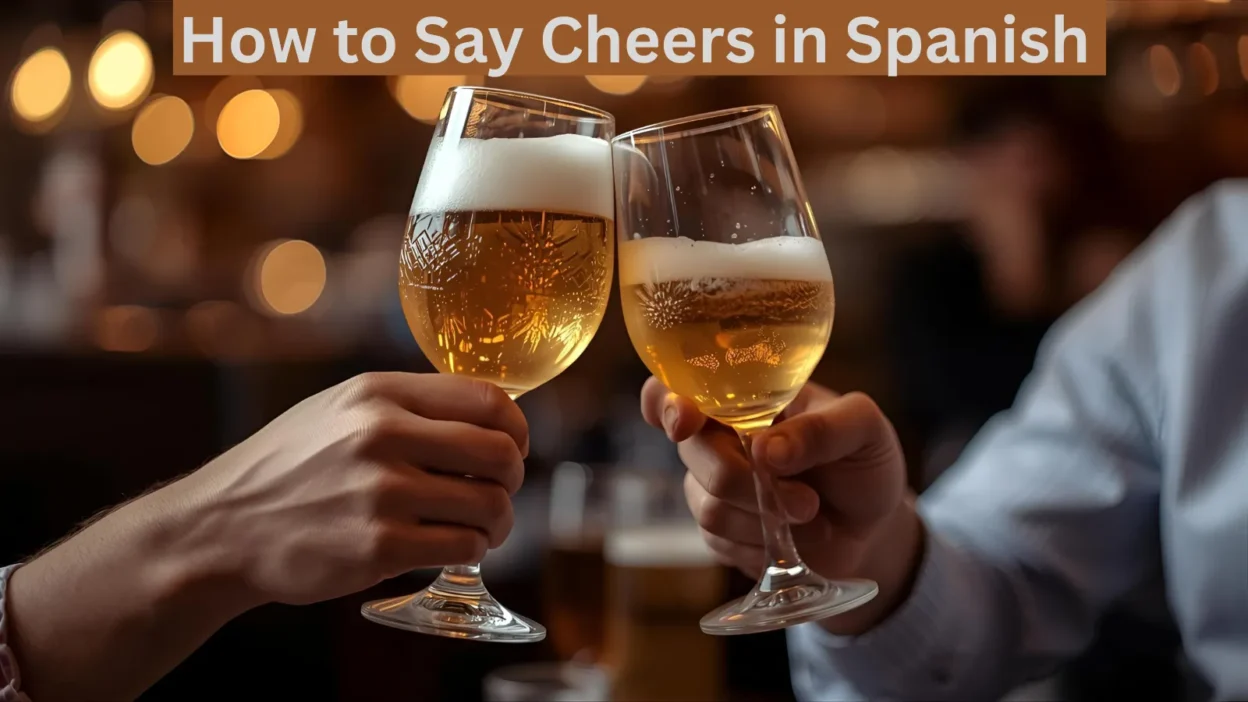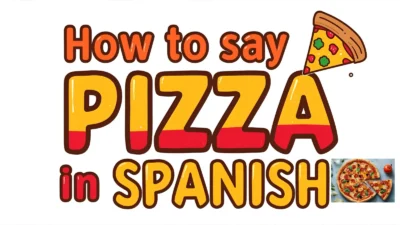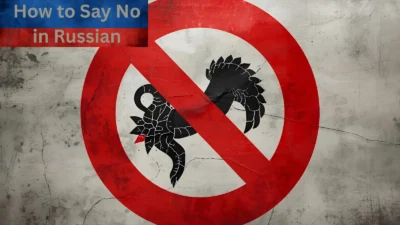Learning how to say cheers in Spanish is a fun and useful phrase, especially when celebrating with friends or making a toast. The most common word you’ll hear is ¡Salud!, which means to your health.
Using it correctly not only helps you join in the moment but also makes you sound more natural in Spanish social settings.
If you’re wondering about how to say cheers in Spanish pronunciation, it’s said as “sah-LOOD.” And when it comes to how to say cheers in Spanish when drinking, simply raise your glass, smile, and say ¡Salud! with confidence.
Say Cheers in Spanish
15 Ways to Say Cheers in Spanish
| No. | Spanish Phrase | English Meaning / Usage |
|---|---|---|
| 1 | ¡Salud! | Cheers / To your health (most common) |
| 2 | ¡Chin chin! | Cheers (informal, casual toast) |
| 3 | ¡A tu salud! | To your health (to one person) |
| 4 | ¡A su salud! | To your health (formal) |
| 5 | ¡Por ti! | To you (friendly toast) |
| 6 | ¡Por ustedes! | To you all (plural) |
| 7 | ¡Por nosotros! | To us |
| 8 | ¡Por la vida! | To life |
| 9 | ¡Por el amor! | To love |
| 10 | ¡Arriba, abajo, al centro, pa’ dentro! | Up, down, to the center, and inside (fun drinking toast) |
| 11 | ¡Que aproveche! | Cheers / May it do you good (before meals) |
| 12 | ¡A brindar! | Let’s toast |
| 13 | ¡Por la amistad! | To friendship |
| 14 | ¡Por el éxito! | To success |
| 15 | ¡Viva! | Long live / Cheers |
15 different ways to say cheers in Spanish—with conversation examples and where each toast is most commonly used.
1. ¡Salud! (Health!)
Origin:
The most universal and traditional way to say “cheers” in Spanish. “Salud” means “health,” similar to the French “santé” or Italian “salute.”
Example:
👤 Persona A: ¡Salud!
👤 Persona B: ¡Salud y buena compañía!
Use: Universal across Spanish-speaking countries. Works in both formal and informal settings.
2. ¡Chin chin! (Clink clink!)
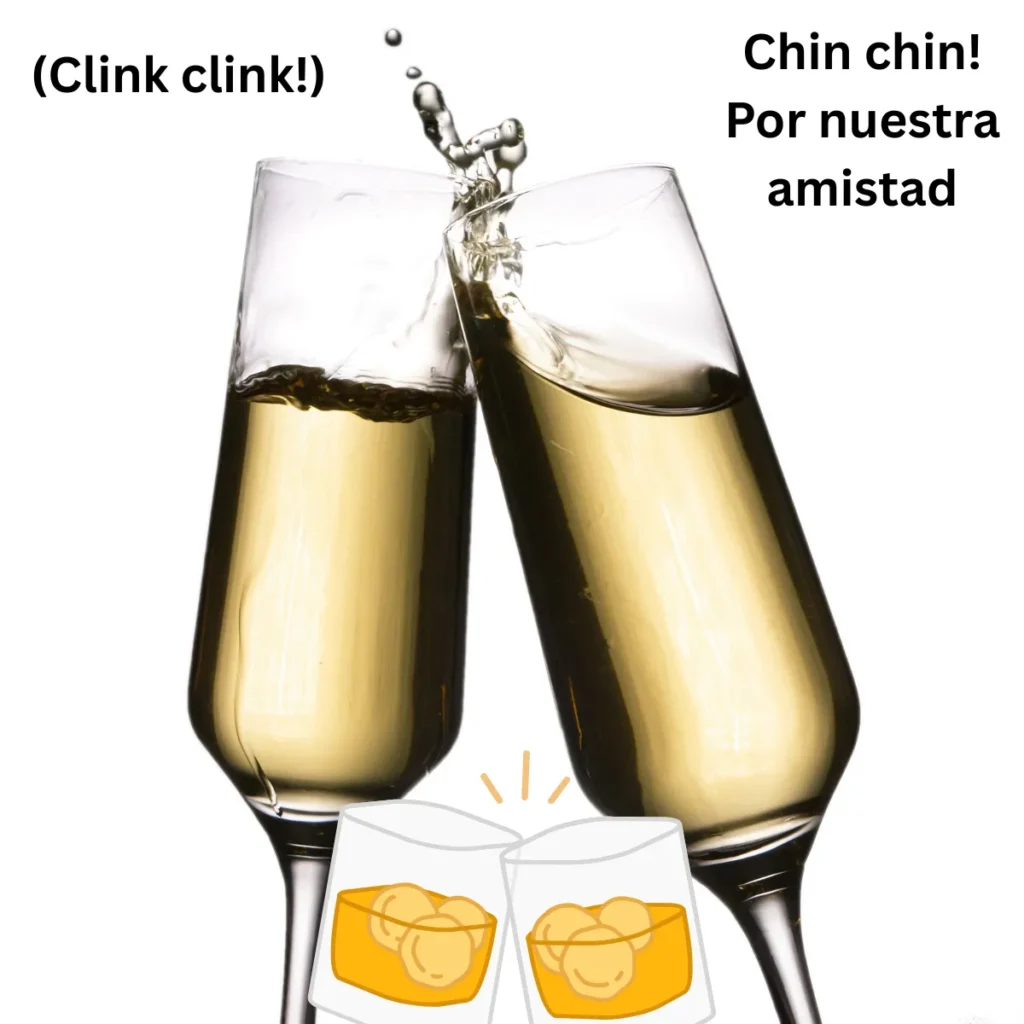
Origin:
Borrowed from Italian, this onomatopoeic phrase mimics the sound of glasses clinking. It’s playful and light-hearted.
Example:
👤 Persona A: ¡Chin chin! Por nuestra amistad.
👤 Persona B: ¡Chin chin! Siempre juntos.
Use: Casual; common in Spain and Latin America, especially among friends.
3. ¡Arriba, abajo, al centro, pa’ dentro! (Up, down, to the center, and inside!)
Origin:
A fun chant used especially in Mexico and Central America during parties. It’s often said with gestures for each direction.
Example:
👤 Persona A: ¡Arriba, abajo, al centro…
👤 Persona B: ¡Y pa’ dentro!
Use: Very informal, festive, often used in group settings.
4. ¡Por nosotros! (To us!)
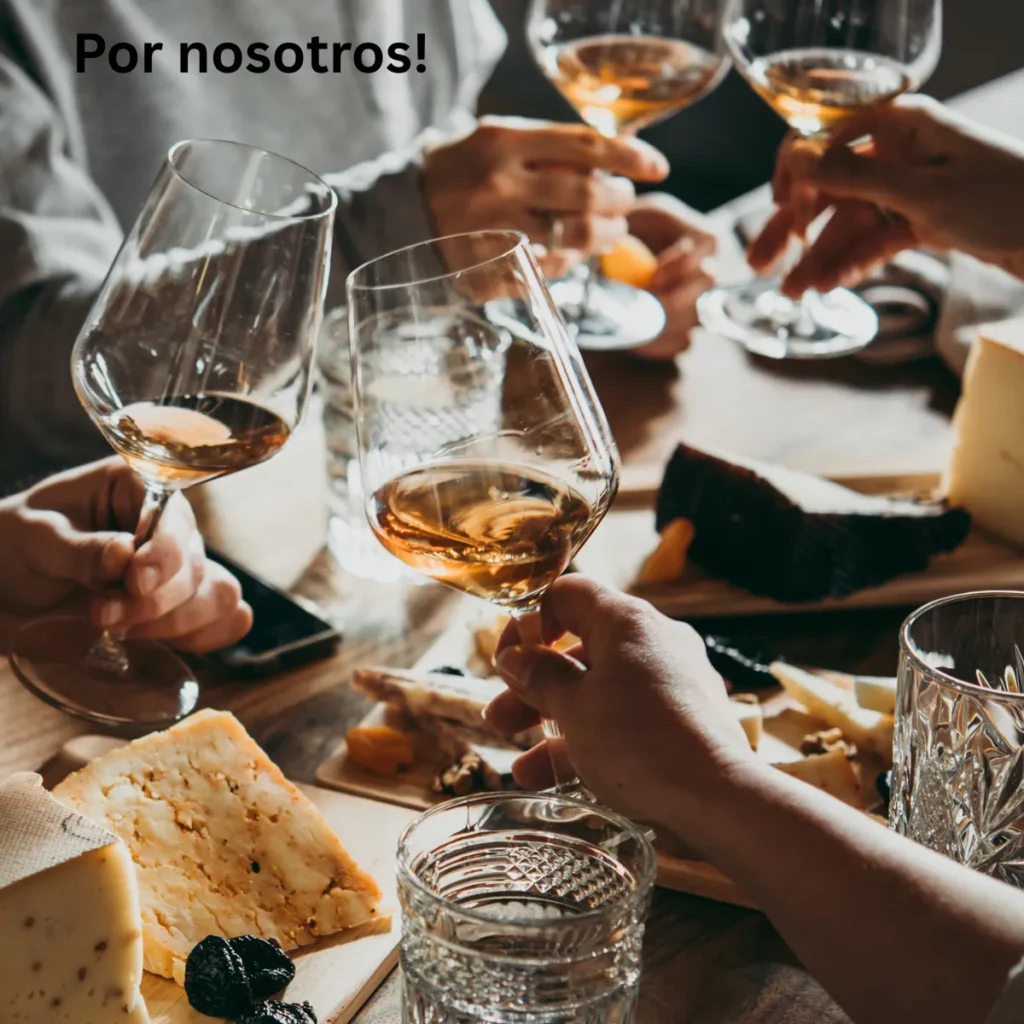
Origin:
A heartfelt toast focusing on unity and shared experience.
Example:
👤 Persona A: ¡Por nosotros y todo lo que hemos vivido!
👤 Persona B: ¡Por nosotros!
Use: Sentimental; works in close gatherings or romantic moments.
5. ¡Por la vida! (To life!)
Origin:
Similar to “L’chaim” in Hebrew or “To life!” in English, this toast celebrates living fully.
Example:
👤 Persona A: ¡Por la vida y las aventuras que vienen!
👤 Persona B: ¡Salud!
Use: Uplifting and deep; suitable for special occasions.
6. ¡A tu salud! (To your health!)
Origin:
A variation of “salud” that focuses on the person you’re toasting with.
Example:
👤 Persona A: ¡A tu salud, amigo!
👤 Persona B: ¡Y a la tuya!
Use: Semi-formal or warm; ideal for respectful toasts.
7. ¡Por el amor! (To love!)

Origin:
Often used at weddings or romantic dinners, this phrase toasts to the power of love.
Example:
👤 Persona A: ¡Por el amor verdadero!
👤 Persona B: ¡Y por encontrarlo!
Use: Romantic and poetic; often paired with celebrations of relationships.
8. ¡Por la familia! (To family!)
Origin:
A culturally significant toast, especially in Latin America where family is deeply valued.
Example:
👤 Persona A: ¡Por la familia, siempre unidos!
👤 Persona B: ¡Salud!
Use: Heartfelt and traditional; often heard at family gatherings.
9. ¡Por el éxito! (To success!)

Origin:
A popular toast in professional or celebratory contexts—graduations, promotions, or achievements.
Example:
👤 Persona A: ¡Por el éxito en tu nuevo trabajo!
👤 Persona B: ¡Gracias! ¡Chin chin!
Use: Motivational and formal or informal depending on tone.
10. ¡A brindar! (Let’s toast!)
Origin:
From the Spanish verb “brindar,” meaning “to toast.” It invites everyone to raise their glasses.
Example:
👤 Persona A: ¡A brindar por esta noche maravillosa!
👤 Persona B: ¡Sí, a brindar!
Use: Friendly and inclusive; often said to prompt a group toast.
11. ¡Por ustedes! (To you all!)
Origin:
A plural version of “a tu salud,” showing appreciation to a group.
Example:
👤 Persona A: ¡Por ustedes, por su apoyo y amistad!
👤 Grupo: ¡Salud!
Use: Gracious and warm; good for toasting to a group.
12. ¡Por un futuro mejor! (To a better future!)
Origin:
Common in reflective moments, especially at New Year’s or after overcoming challenges.
Example:
👤 Persona A: ¡Por un futuro mejor para todos!
👤 Persona B: ¡Amén a eso!
Use: Hopeful and optimistic.
13. ¡Por esta noche! (To tonight!)
Origin:
Used in the moment to honor the present experience.
Example:
👤 Persona A: ¡Por esta noche inolvidable!
👤 Persona B: ¡Chin chin!
Use: Casual and celebratory.
14. ¡A lo que venga! (To whatever comes!)
Origin:
A spontaneous and open-hearted way to embrace the unknown.
Example:
👤 Persona A: ¡A lo que venga, sin miedo!
👤 Persona B: ¡Salud!
Use: Fun and adventurous; great for young groups or parties.
15. ¡Que no falte nunca el vino! (May we never run out of wine!)
Origin:
A humorous and very Spanish toast. You’ll often hear it in Spain, especially among friends.
Example:
👤 Persona A: ¡Y que no falte nunca el vino!
👤 Persona B: ¡Ni las buenas compañías!
Use: Humorous and light; adds flavor to casual toasts.
Conclusion:
Mastering how to say cheers in Spanish goes beyond just knowing ¡Salud!—it’s about joining in the joy of shared moments. Whether you’re learning the correct pronunciation or using it while drinking with friends, saying cheers in Spanish helps you connect, celebrate, and sound more authentic in social gatherings.
